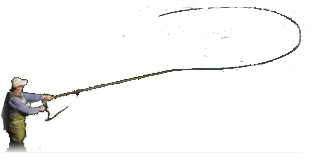

Originally Posted by
Byron haugh

I have watched an old YouTube of Fran Betters tying his Ausable patterns.
I think he was an amazing tier/fisher and, especially for "mainstreaming" the precursor pattern to the Comparadun and ultimately the Sparkle Duns.
I heard something on his video that I had missed before. In the pattern he was tying ( I think an Ausable Wulff), when wrapping the two hackle feathers, he mentions using two different sized hackles. He says, that way, if the longer barbules of one break through the water surface, the shorter barbules one will assist in keeping the fly afloat.
Comments??? Thoughts??
There is a problem with that concept. There is IN PHYSICS, NO FREE LUNCH! Let us do a mind experiment.
Assumptions:
1. We ignore the minor difference in fly mass between one fly of identical mass and construction tied with 2 hackle feathers of different barb length vs an otherwise identical fly tied with 2 hackles of identical barb length.
2. Therefore, we assume the hackle density of each fly will be identical, we assume that the identical numbers of hackle fibers are positioned to support the fly, we assume the mass to be supported by the hackles is identical.
3. Therefore, on the fly with longer and shorter hackles only the longer hackles will be supporting the fly initially. TWICE the number of hackles will be supporting the fly tied with identical length hackles.
4. Therefore, each hackle on the fly with mixed hackle supports TWICE the weight of the other fly; therefore, it is more likely to sink though. One the longer hackle sinks through, the shorter hackle assumes the load but it also supports twice the load and is more likely to penetrate the meniscus.
CONCLUSION - Unless I am missing something, the concept is faulty and will not work. For it to work, half the hackle fibers have to be able to support an identical mass just as well as twice the hackle fibers.
One advantage of genetic hackle is that the hackle fiber density is greater and therefore has more supporting hackle per wrap. For Betters concept to work, hackle density would have to be unimportant in supporting the fly since he is effectively tying the fly to initially float with half the hackles.
Regards,
Silver
"Discovery consists of seeing what everybody has seen and thinking what nobody has thought"..........Szent-Gyorgy




 Reply With Quote
Reply With Quote



